Cardiovascular
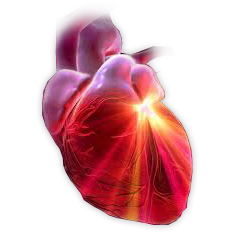
Cardiovascular
The cardiovascular system consists of the heart, blood and blood vessels. These organs form the 3 major closed circulation systems in the body, i.e., the pulmonary, coronary and systemic circulations. Cardiovascular disease includes heart disease, vascular diseases of the brain and kidney, and peripheral arterial diseases. Cardiovascular disease is the leading cause of death globally. Studies on cardiovascular regulation are important to provide a better understanding of this group of diseases and to help improve the corresponding treatment.
Targets for Cardiovascular
Products for Cardiovascular
- Cat.No. Product Name Information
-
GC52065
4-Methoxyphenyl-β-D-Glucopyranoside
An aryl glycoside with ice recrystallization inhibitory activity
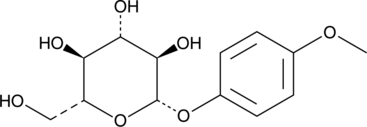
-
GC40053
5α,6α-epoxy Cholestanol
An oxysterol and a metabolite of cholesterol produced by oxidation
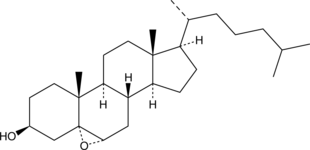
-
GC40782
5(Z),11(Z),14(Z)-Eicosatrienoic Acid
5(Z),11(Z),14(Z)-Eicosatrienoic acid is a polyunsaturated fatty acid found in various natural sources including maritime pine (Pinus pinaster) seed oil (MPSO), gymnospermae leaves and seeds, and freshwater gastropods.

-
GC42498
5-chloro Hydrochlorothiazide
5-chloro Hydrochlorothiazide is a derivative of hydrochlorothiazide, which is a diuretic and antihypertensive agent that increases renal excretion of sodium, potassium, chloride, and bicarbonate ions by inhibiting tubular reabsorptive mechanisms.
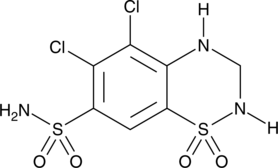
-
GC45357
5-Chlorouracil
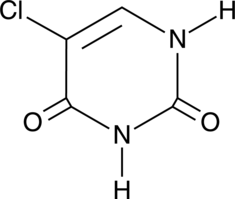
-
GC40336
5-cis Carbaprostacyclin
5-cis Carbaprostacyclin is a stable analog of PGI2 and an isomer of carbaprostacyclin.
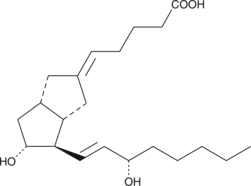
-
GC41483
5-hydroxy Propranolol
5-hydroxy Propranolol is a metabolite of propranolol, a β-adrenergic receptor antagonist.
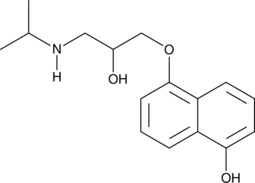
-
GC42563
5-methyl-2-HOBA (hydrochloride)
5-methyl-2-HOBA is an isoketal scavenger.
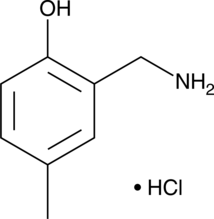
-
GC46706
5-Methyltetrahydrofolic Acid (hydrate)
A biologically active form of folic acid
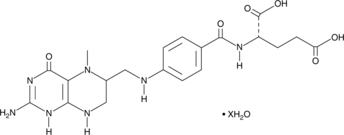
-
GC41423
5-trans Prostaglandin E2
5-trans PGE2 occurs naturally in some gorgonian corals and is a common impurity in commercial lots of PGE1.
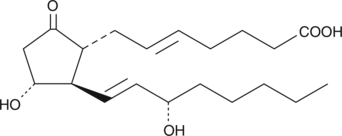
-
GC40585
6α-Prostaglandin I1
6α-Prostaglandin I1 (6α-PGI1) is a stable Prostaglandin I2 (PGI2) analog resistant to hydrolysis in aqueous solutions.
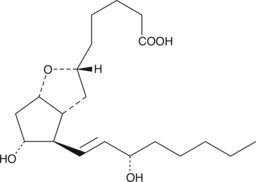
-
GC49629
6β-hydroxy Prednisolone
A metabolite of prednisolone
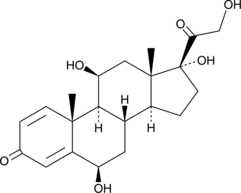
-
GC40586
6β-Prostaglandin I1
6β-PGI1 is a stable PGI2 analog resistant to hydrolysis in aqueous solutions.
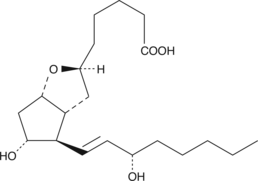
-
GC40535
6,15-diketo-13,14-dihydro Prostaglandin F1α
6,15-diketo-13,14-dihydro PGF1α is a metabolite of PGI2.
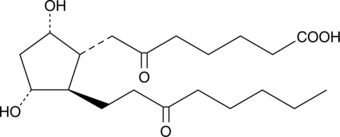
-
GC18219
6-hydroxy Warfarin
6-hydroxy Warfarin is a metabolite of (+)-warfarin , which is a weaker vitamin K antagonist than (-)-warfarin .
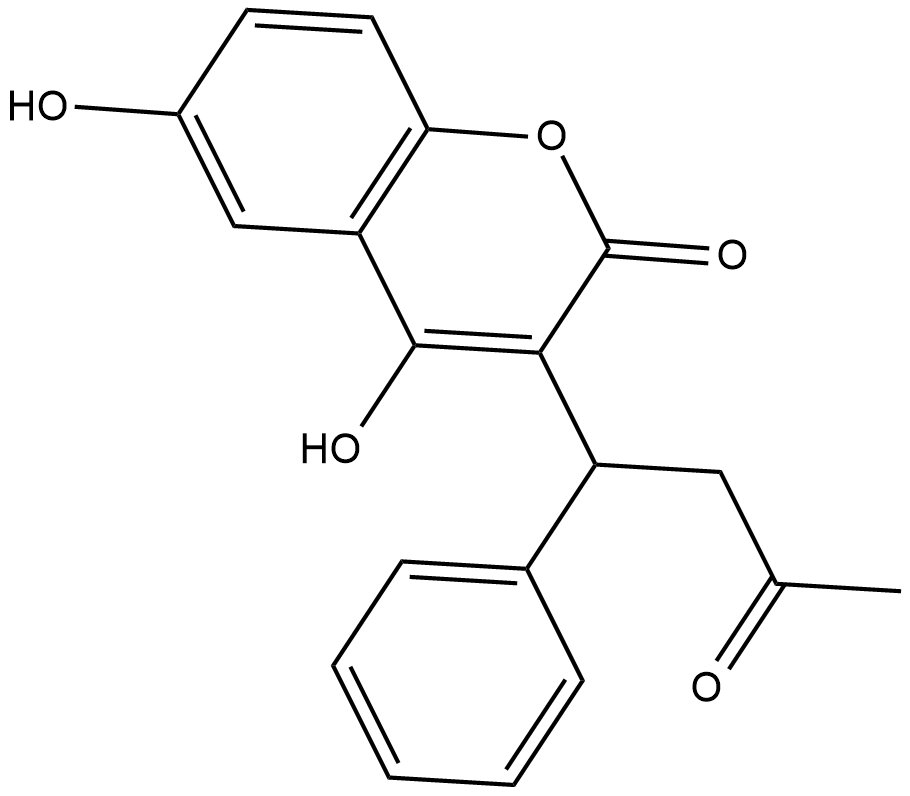
-
GC18820
6-keto Prostaglandin E1
6-keto PGE1 is a metabolite isolated after the incubation of PGI2 with rabbit liver microsomes.
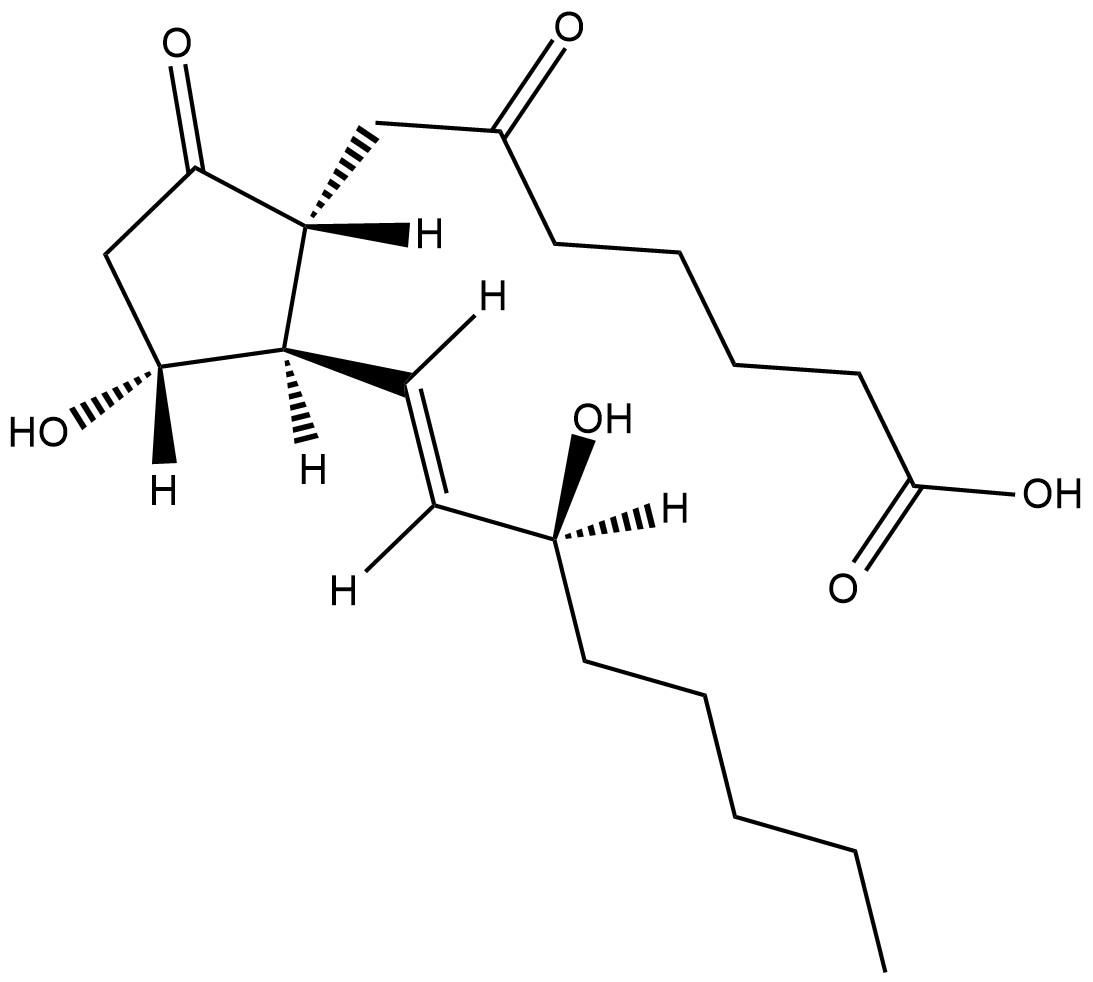
-
GC40202
7α-hydroxy Cholesterol-d7
7α-hydroxy Cholesterol-d7 is intended for use as an internal standard for the quantification of 7α-hydroxy cholesterol by GC- or LC-MS.
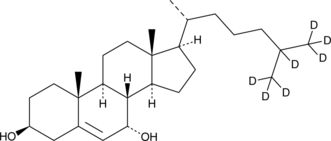
-
GC40201
7β-hydroxy Cholesterol-d7
7β-hydroxy Cholesterol-d7 is intended for use as an internal standard for the quantification of 7β-hydroxy cholesterol by GC- or LC-MS.
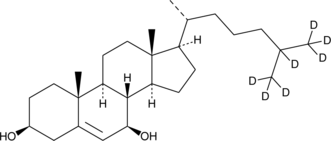
-
GC46241
7-keto Cholesterol-d7
7-keto Cholesterol is a bioactive sterol and a major oxysterol component of oxidized LDL
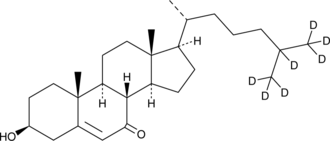
-
GC18737
8-iso Prostaglandin E1
Isoprostanes are a family of prostanoid molecules of non-cyclooxygenase origin.
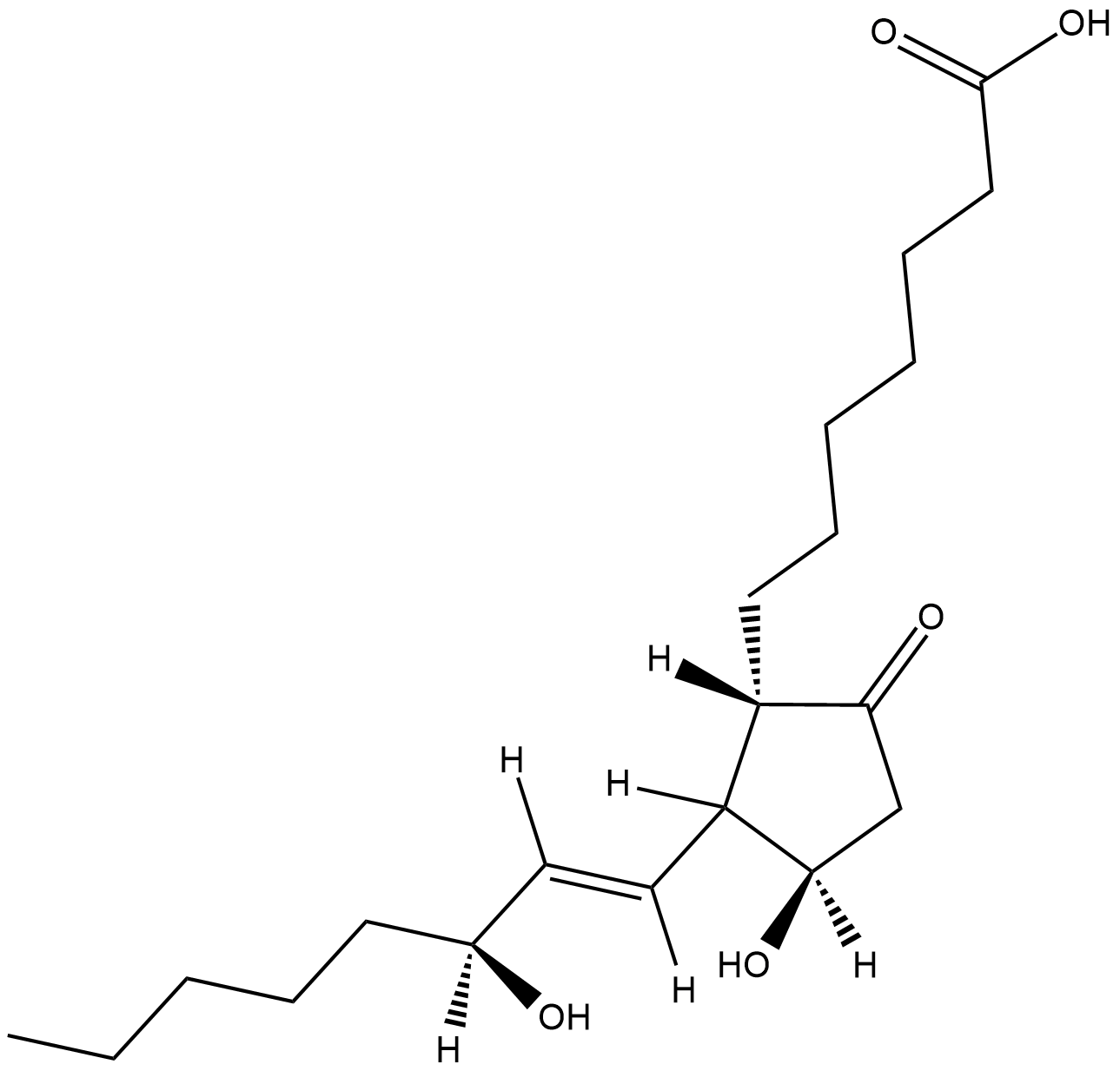
-
GC42634
9(R)-HODE cholesteryl ester
9(R)-HODE cholesteryl ester was originally extracted from atherosclerotic lesions.
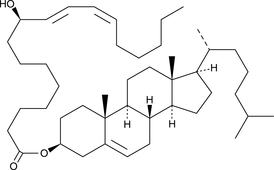
-
GC19460
9(S)-HODE
9(S)-HODE is produced by the lipoxygenation of linoleic acid in both plants and animals.

-
GC42635
9(S)-HODE cholesteryl ester
9(S)-HODE cholesteryl ester was originally extracted from atherosclerotic lesions.
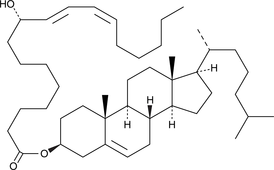
-
GC40338
9-deoxy-9-methylene Prostaglandin E2
9-deoxy-9-methylene Prostaglandin E2 (9-deoxy-9-methylene PGE2) is a stable, isosteric analog of PGE2.
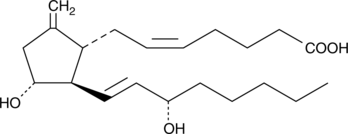
-
GA20031
A 71915
A 71915 is a highly potent and competitive natriuretic peptide receptor A (ANP, NPRA) antagonist (pKi= 9.18).

-
GC48486
AAA
A GPR75 antagonist
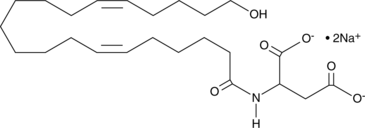
-
GC49576
Abnormal Cannabidiol-d3
Internal standard for the quantification of abnormal cannabidiol
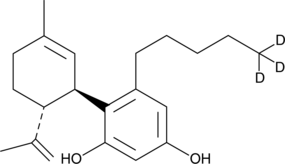
-
GP10121
Ac-Endothelin-1 (16-21), human
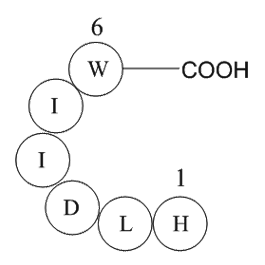
-
GC52058
Acebutolol
Acebutolol is an orally active β1 adrenergic receptor (β1AR) antagonist.
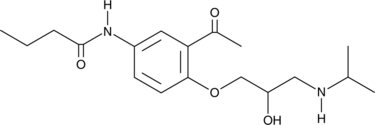
-
GC42690
Acecainide (hydrochloride)
Acecainide is an active metabolite of the class III antiarrhythmic procainamide.
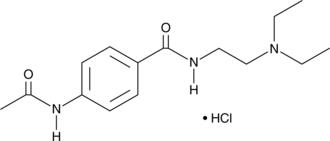
-
GC49614
Acenocoumarol-d4
Acenocoumarol-d4 is deuterium labeled Acenocoumarol.
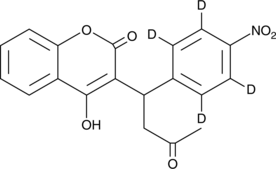
-
GC46782
Acetochlor
An herbicide
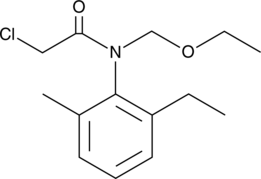
-
GP10059
Acetyl Angiotensinogen (1-14), porcine
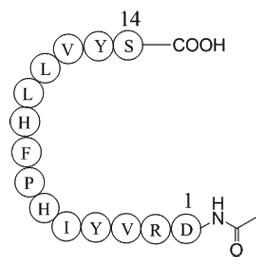
-
GC18474
Acetyldigitoxin
Acetyldigitoxin is cardiac glycoside and an inhibitor of the Na+/K+ ATPase with an IC50 value of 5 nM in isolated rat pinealocytes.
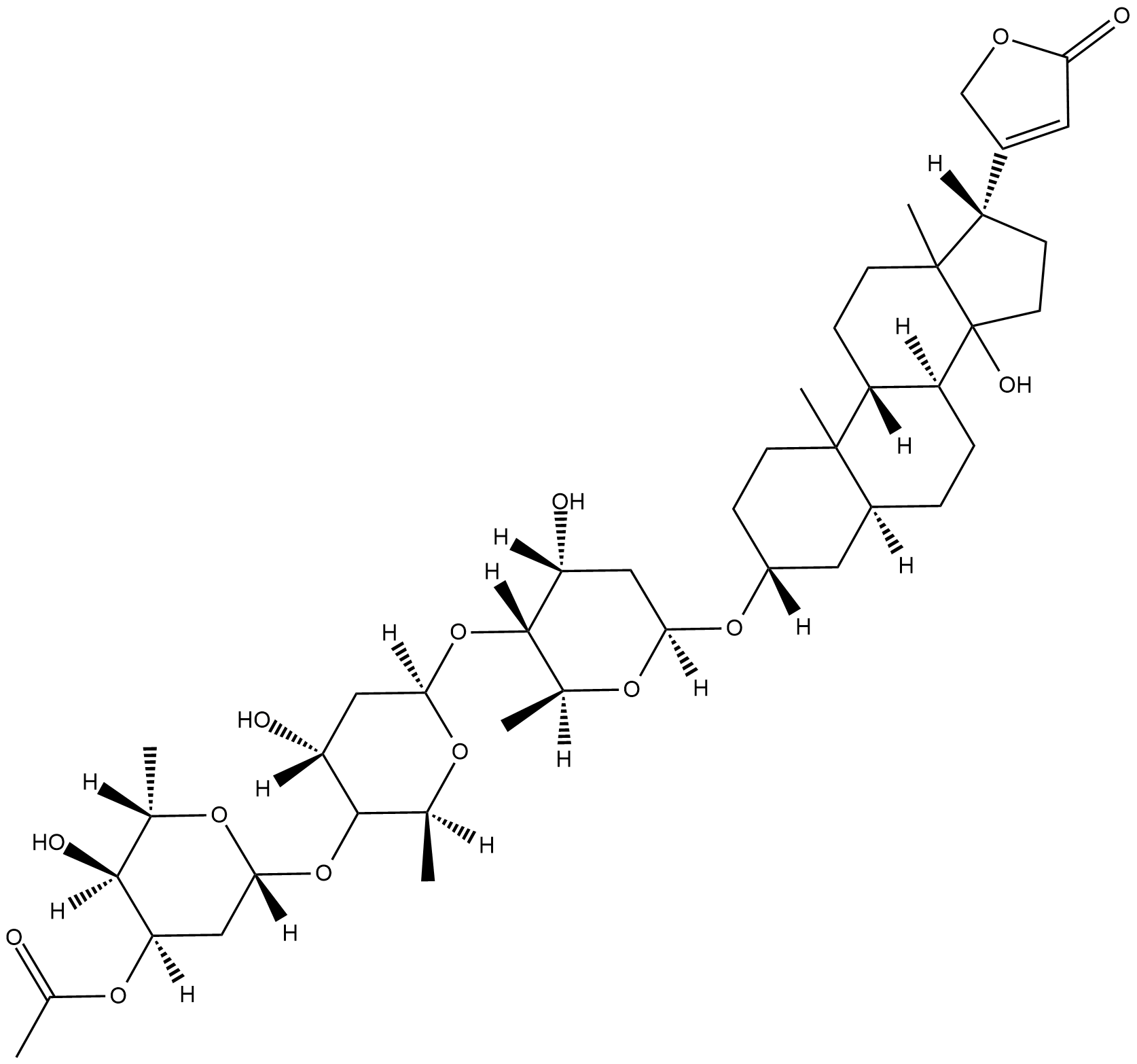
-
GC49406
ACT-373898
A metabolite of macitentan
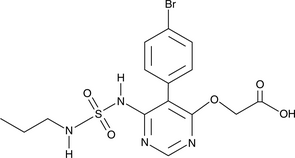
-
GC46805
Adefovir-d4
An internal standard for the quantification of adefovir

-
GP10113
Adrenomedullin (1-12), human
An N-terminal fragment of adrenomedullin
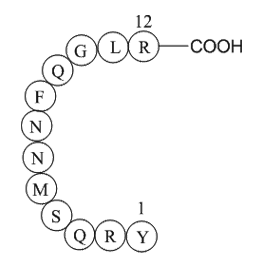
-
GC42738
Adrenomedullin (13-52) (human) (trifluoroacetate salt)
Adrenomedullin (13-52) is a truncated form of adrenomedullin (1-52).
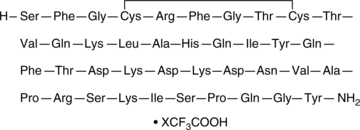
-
GC42746
AFP 07 (free acid)
Prostaglandin I2 is an unstable prostanoid which, through the 'I prostanoid' (IP) receptor, inhibits platelet aggregation and promotes vasodilatation in pulmonary vascular beds.
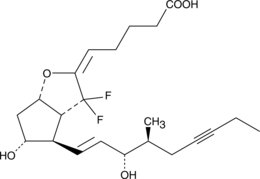
-
GC46820
AHU377-d4
AHU377-d4 (AHU-377-d4) is the deuterium labeled Sacubitril.
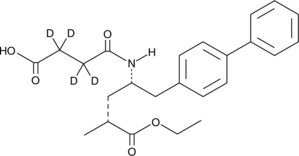
-
GC49110
AICA Ribonucleotide
An AMPK activator
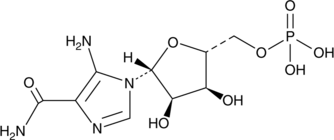
-
GC46821
Ajoene
A disulfide with diverse biological activities

-
GC52023
Alfuzosin-d7
An internal standard for the quantification of alfuzosin
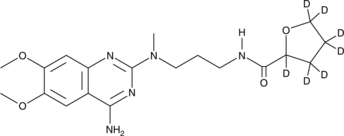
-
GC46835
Alyssin
An isothiocyanate with diverse biological activities

-
GC49262
Alytesin (trifluoroacetate salt)
A neuropeptide with diverse biological activities

-
GC42778
Amauromine
Amauromine is a neutral antagonist of the cannabinoid (CB) receptor CB1 that is selective for CB1 (Ki = 178 nM; Kb = 66.6 nM) over CB2, with no activity at CB2 receptors at concentrations up to 10 μM.
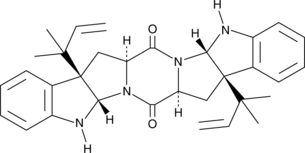
-
GC49638
Ambrisentan-d3
An internal standard for the quantification of ambrisentan
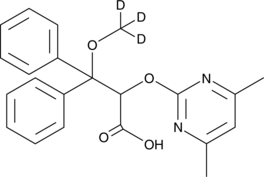
-
GC46842
Amiodarone-d4 (hydrochloride)
An internal standard for the quantification of amiodarone
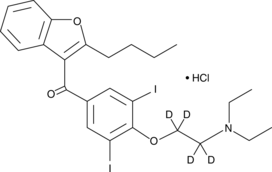
-
GC46845
Amlodipine-d4 (maleate)
An internal standard for the quantification of amlodipine
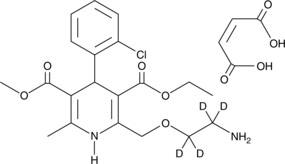
-
GP10099
amyloid A protein fragment [Homo sapiens]
Apolipoproteins related to HDL in plasma
![amyloid A protein fragment [Homo sapiens] Chemical Structure amyloid A protein fragment [Homo sapiens] Chemical Structure](/media/struct/GP1/GP10099.png)
-
GP10077
Angiotensin (1-7)
Ang-(1-7) (H - Asp - Arg - Val - Tyr - Ile - His - Pro - OH) is an endogenous peptide fragment that can be produced from Ang I or Ang II via endo- or carboxy-peptidases respectively[1].
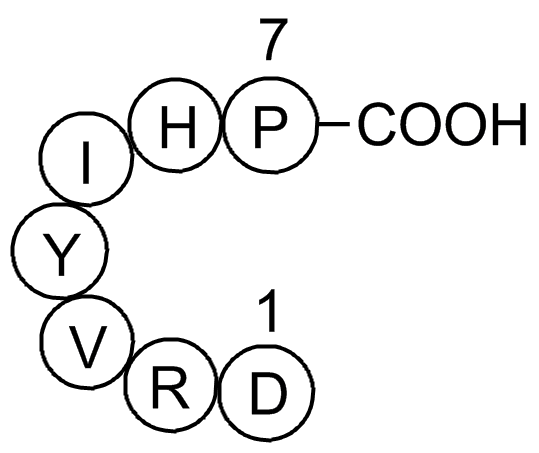
-
GP10074
Angiotensin 1/2 (1-5)
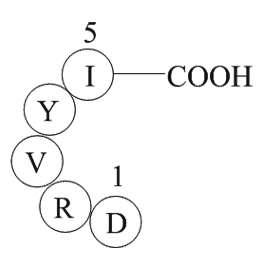
-
GP10067
Angiotensin 1/2 (1-6)
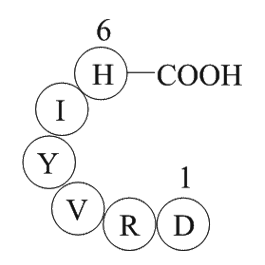
-
GP10144
Angiotensin 1/2 (1-7) amide
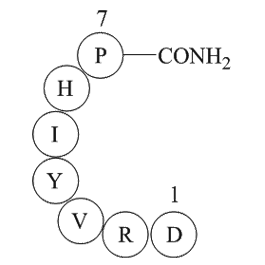
-
GP10012
Angiotensin 1/2 (1-8) amide
Vasoconstrictor
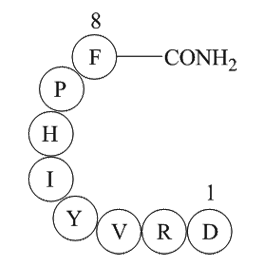
-
GP10025
Angiotensin 1/2 (1-9)
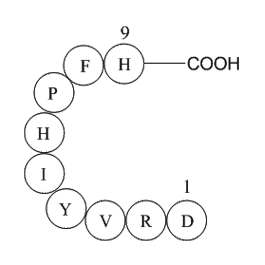
-
GP10045
Angiotensin 1/2 (2-7)
Vasoconstrictor
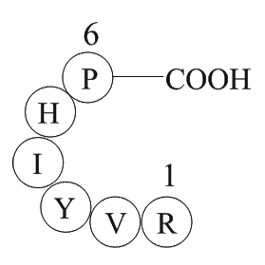
-
GP10079
Angiotensin 1/2 (5-7)
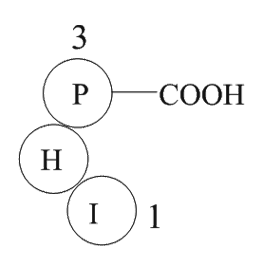
-
GP10120
Angiotensin 1/2 + A (2 - 8)
Vasoconstrictor
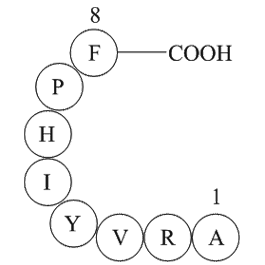
-
GC52415
Angiotensin A (trifluoroacetate salt)
An AT1 and AT2 receptor agonist and active metabolite of angiotensin II
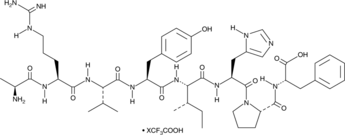
-
GP10087
Angiotensin I (human, mouse, rat)
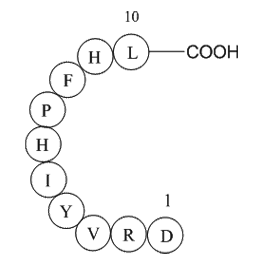
-
GC42808
Angiotensin I (human, rat, mouse) (trifluoroacetate salt)
Angiotensin I is an endogenous peptide that is converted to the vasoconstrictor angiotensin II by angiotensin-converting enzyme (ACE).
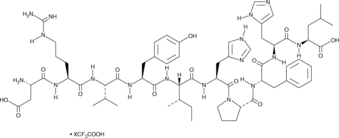
-
GP10023
Angiotensin II
An agonist at AT1 and AT2 receptors
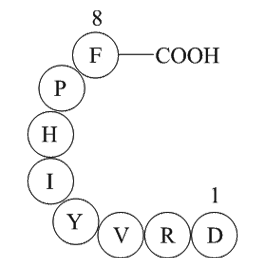
-
GC42809
Angiotensin II (3-8) (human, rat, mouse) (trifluoroacetate salt)
Angiotensin II (3-8) is an endogenous C-terminal fragment of the peptide vasoconstrictor angiotensin II.
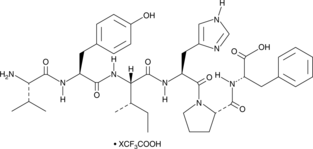
-
GC46856
Angiotensin II (5-8) (human, rat, mouse) (trifluoroacetate salt)
An endogenous angiotensin II fragment
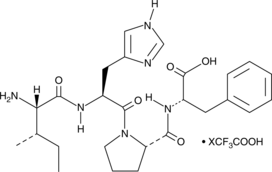
-
GP10110
Angiotensin III (human, mouse)
An agonist at AT1 and AT2 receptors

-
GP10137
ANP (1-11), rat
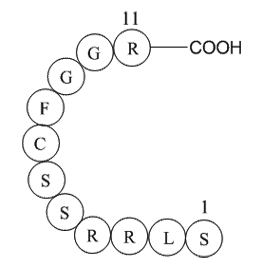
-
GC42821
AP219
AP39 is a compound used to increase the levels of hydrogen sulfide (H2S) within mitochondria.
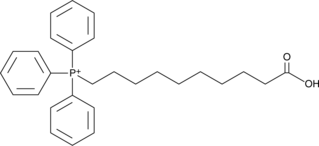
-
GC52427
Apelin-12 (human, mouse, rat, bovine) (acetate)
An endogenous agonist of the APJ receptor
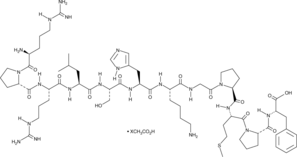
-
GC49314
Arecaidine propargyl ester (hydrobromide)
A muscarinic M2 agonist
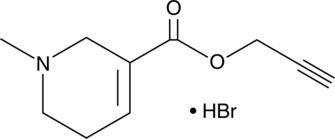
-
GC46879
Argatroban-d3 (hydrochloride)
An internal standard for the quantification of argatroban
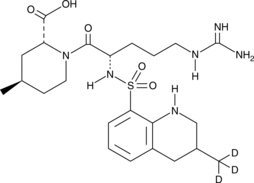
-
GC48997
Argipressin (acetate)
A peptide hormone with vasoconstrictive and antidiuretic activities
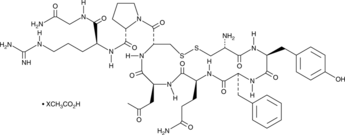
-
GC40848
Aspalatone
Aspalatone is an anti-platelet aggregator (IC50 = 180 μM, in vitro) that prolongs bleeding time significantly in a rodent model of thromboembolism.
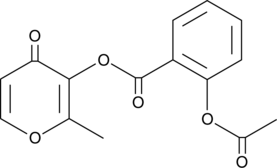
-
GC39554
AT2 receptor agonist C21
An AT2 receptor agonist
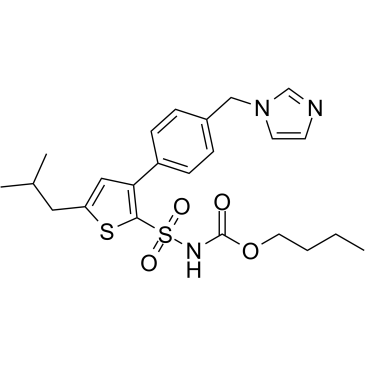
-
GC46889
Atorvastatin (calcium salt hydrate)
An HMG-CoA reductase inhibitor
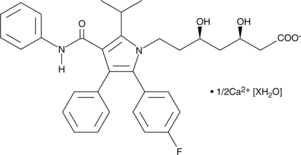
-
GC49421
Atorvastatin lactone-d5
An internal standard for the quantification of atorvastatin lactone
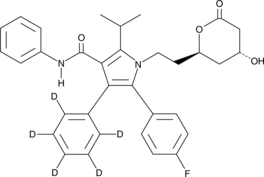
-
GC46890
Atorvastatin-d5 (calcium salt)
An internal standard for the quantification of atorvastatin
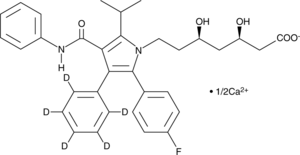
-
GC42869
Atpenin A5
Mitochondrial complex II (succinate dehydrogenase or succinate:ubiquinone oxidoreductase) is a functional member of the Krebs cycle and the aerobic respiratory chain that couples the oxidation of succinate to fumarate with the reduction of quinone to quinol.
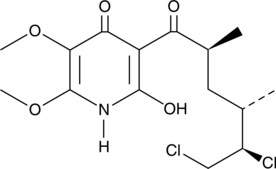
-
GP10061
Atrial Natriuretic Factor (1-29), chicken
Atrial Natriuretic Factor (1-29), chicken, (C130H223N51O41S5), a peptide with the sequence H2N-SPKMVQGSGCFGRKMDRISSSSGLGCKVLRRH-OH, MW= 3316.8.
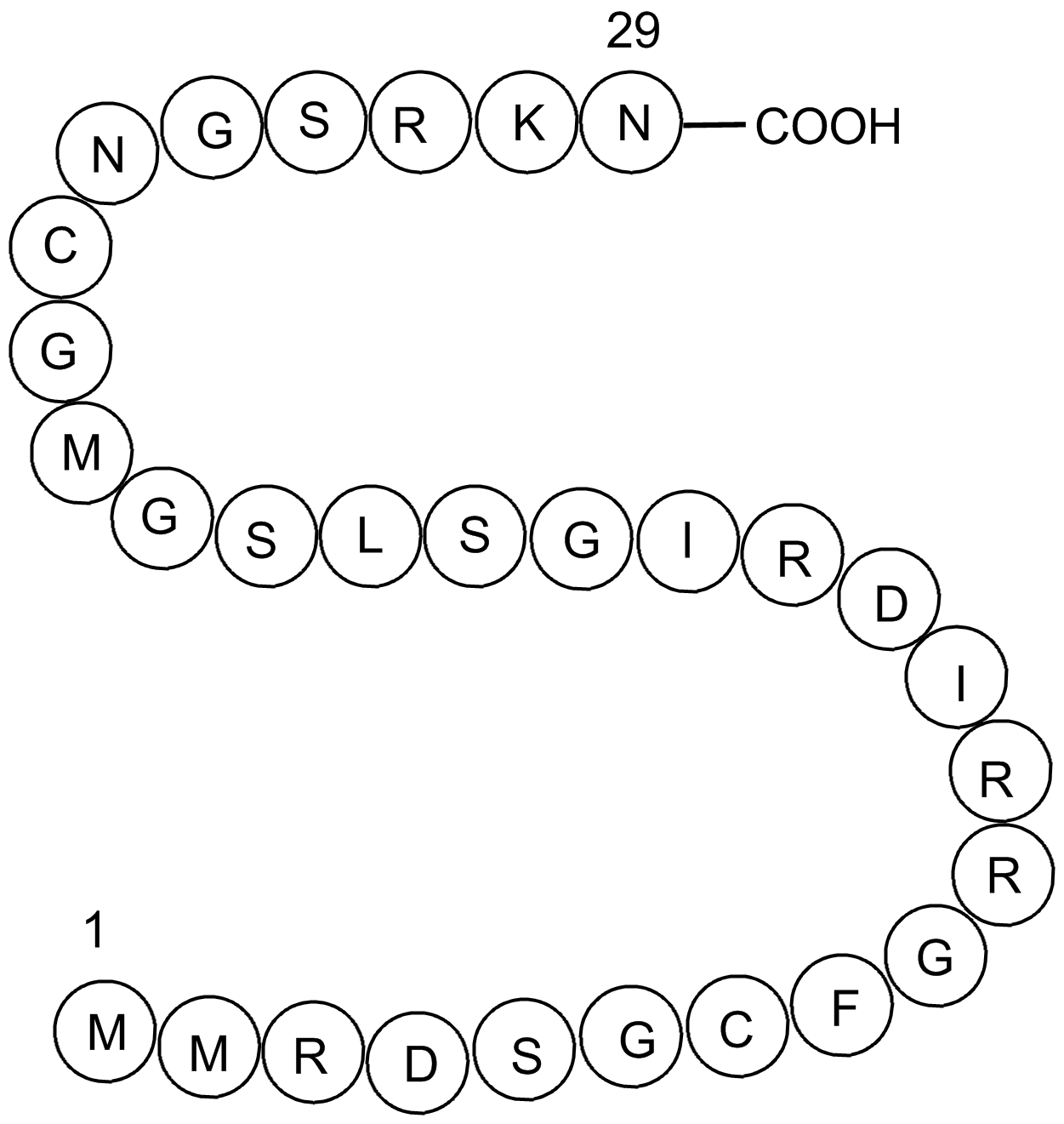
-
GC52359
ATX-100
An ionizable cationic lipid

-
GC49784
AZD 2716
An sPLA2 inhibitor
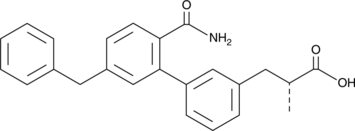
-
GC42890
Azelaoyl PAF
Oxidized low-density lipoprotein (oxLDL) particles contain low molecular weight species which promote the differentiation of monocytes via the nuclear receptor PPARγ.
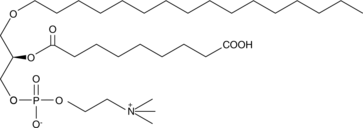
-
GC49057
Azelastine-13C-d3 (hydrochloride)
An internal standard for the quantification of azelastine
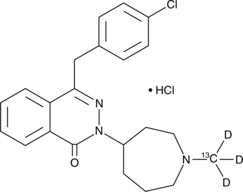
-
GC18313
BAR501 Impurity
BAR501 impurity is an impurity found in the preparation of BAR501 that acts as an agonist of the G protein-coupled bile acid-activated receptor (GP-BAR1).
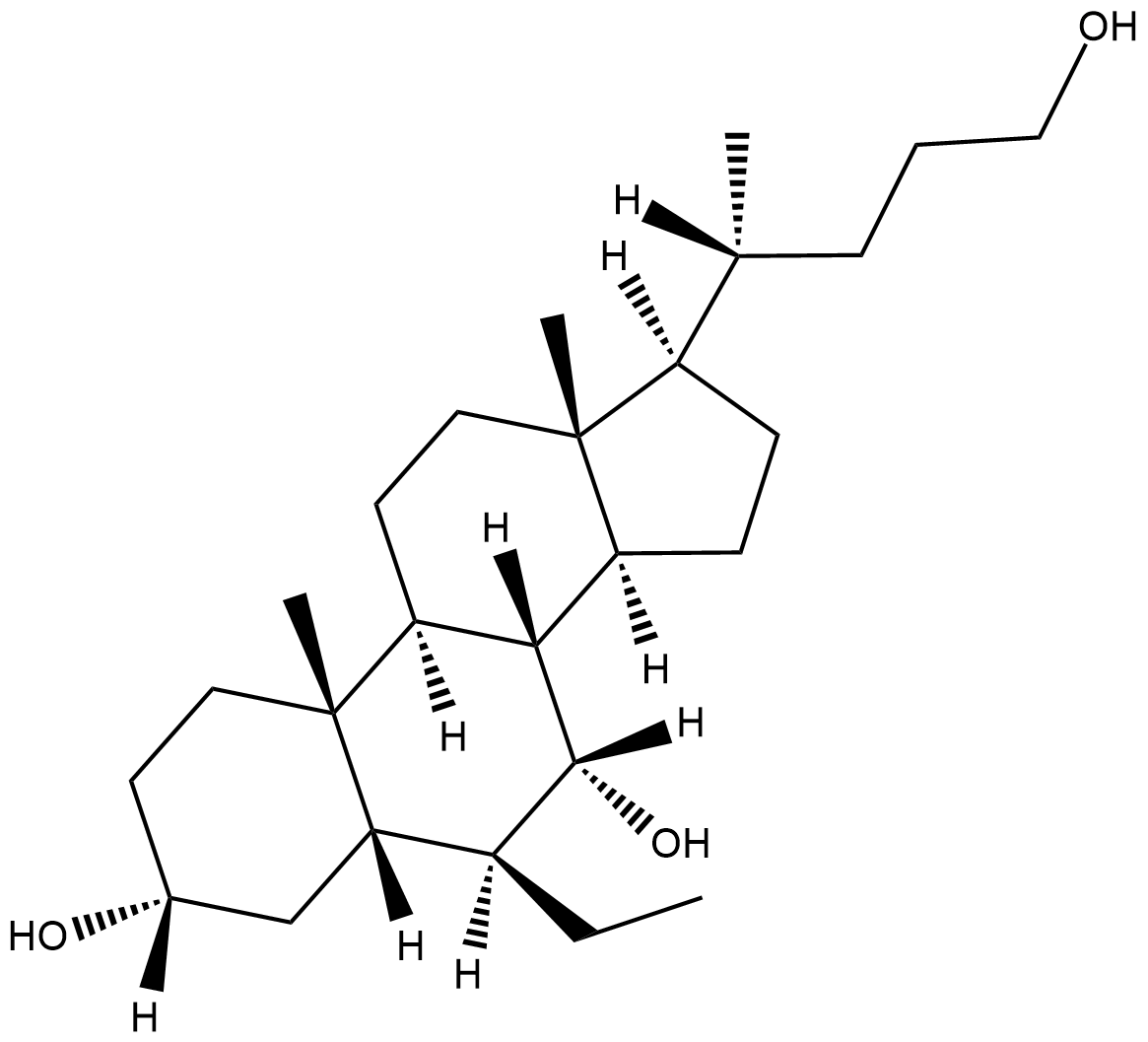
-
GC48589
Bassianin
A fungal metabolite

-
GC46911
Beauveriolide I
A cyclodepsipeptide inhibitor of lipid droplet formation
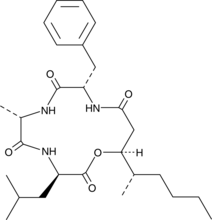
-
GC46912
Beauveriolide III
A cyclodepsipeptide inhibitor of lipid droplet formation
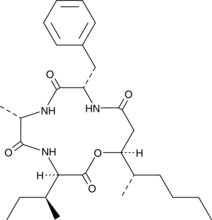
-
GC46913
Benazepril-d5 (hydrochloride)
An internal standard for the quantification of benazapril
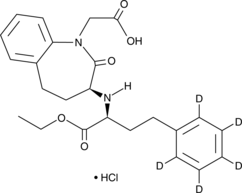
-
GC42913
Benazeprilat
Benazeprilat is an inhibitor of angiotensin-converting enzyme (ACE; IC50 = 0.28 nM in plasma from dog) and the active metabolite of the prodrug benazepril.
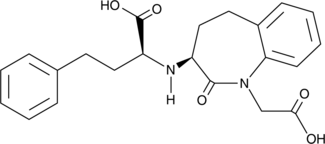
-
GC49836
Benoxaprofen
Benoxaprofen (LRCL 3794) is a potent and long-acting anti-inflammatory and antipyretic compound.

-
GC49403
Benzarone
An active metabolite of benzbromarone
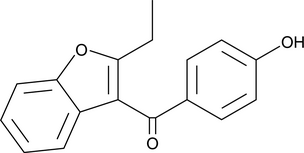
-
GC42924
Beraprost (sodium salt)
Beraprost is an analog of prostacyclin in which the unstable enol-ether has been replaced by a benzofuran ether function.
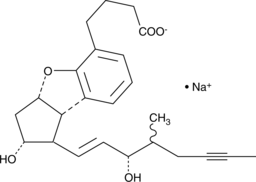
-
GC49387
Berberine-d6 (chloride)
An internal standard for the quantification of berberine
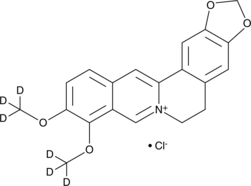
-
GC42941
Bis(methylthio)gliotoxin
Bis(methylthio)gliotoxin is a fungal metabolite originally isolated from G.
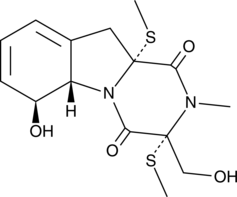
-
GC18716
Bisindolylmaleimide XI (hydrochloride)
Bisindolylmaleimide XI (BIM XI) is a selective, cell-permeable protein kinase C (PKC) inhibitor that displays 10-fold greater selectivity for PKCα (IC50 = 9 nM) and 4-fold greater selectivity for PKCβI (IC50 = 28 nM) over Ca2+-independent PKCε (IC50 = 108 nM).
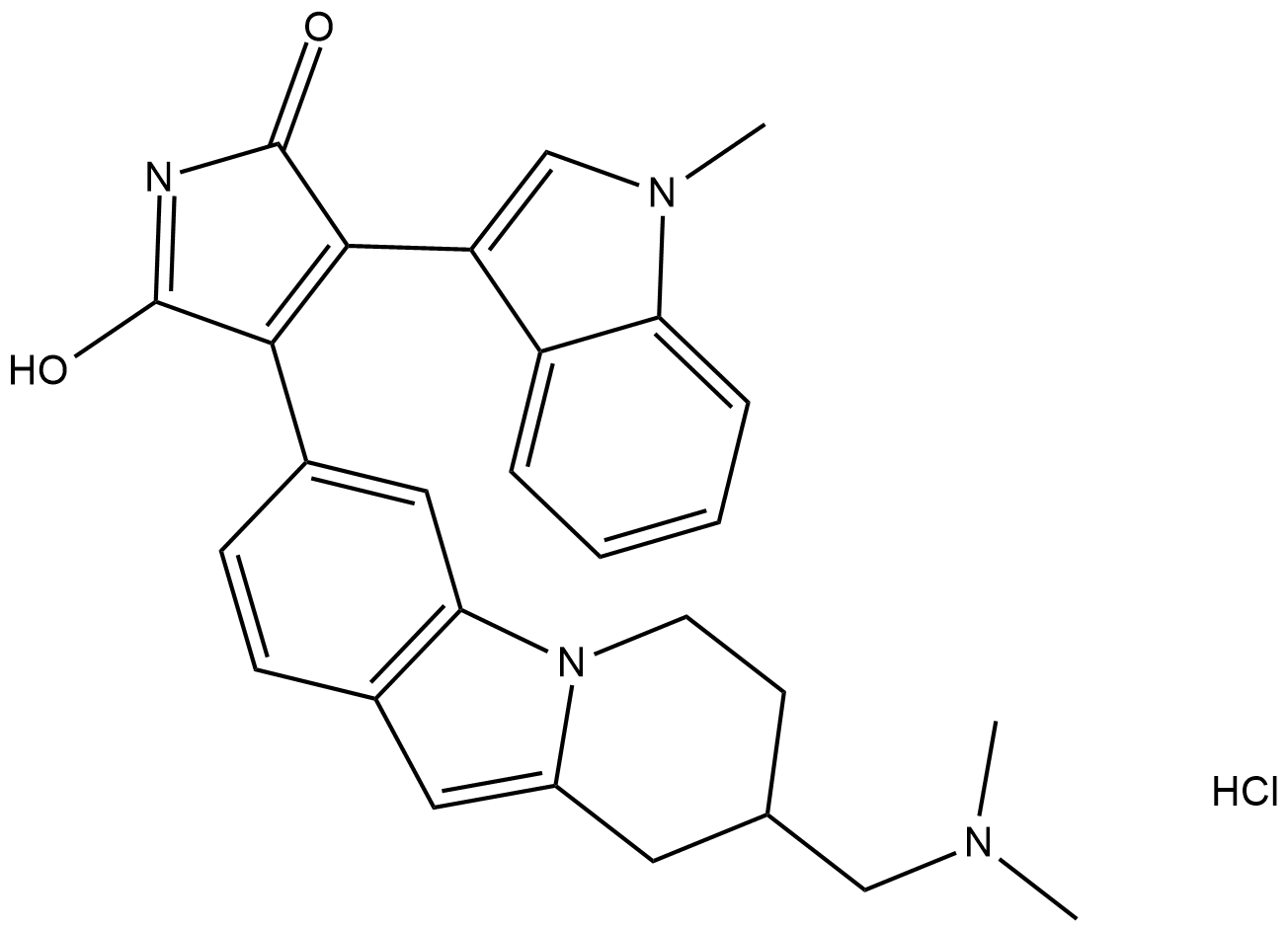
-
GP10071
BNP (1-32), human
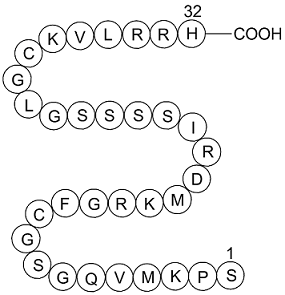
-
GA20982
Boc-D-Phe-Pro-OH
A synthetic intermediate

-
GC42966
Bopindolol (malonate)
Bopindolol is a non-selective β-adrenergic receptor antagonist.
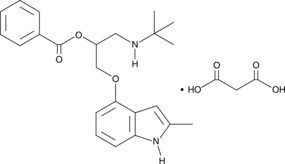
-
GC48620
BPKDi
A PKD inhibitor
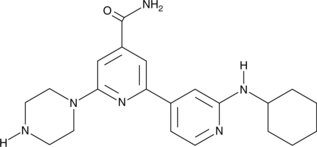
-
GC49885
BQ-3020 (trifluoroacetate salt)
A peptide ETB receptor antagonist



